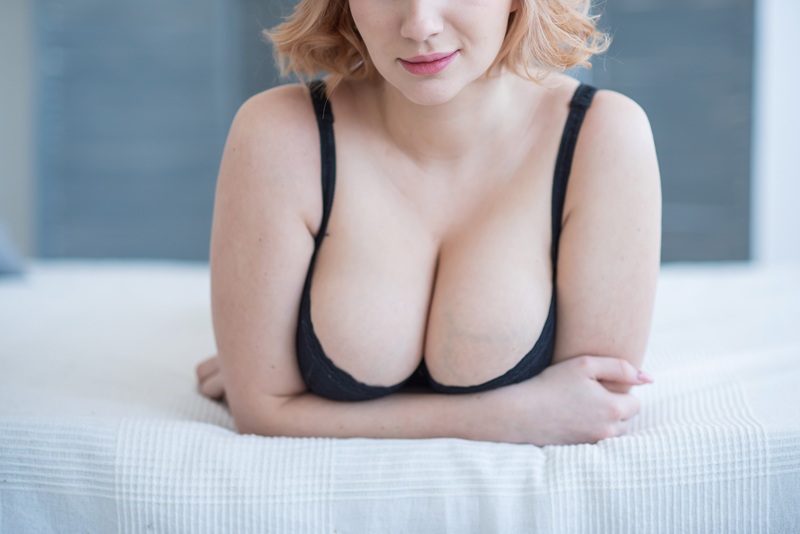|

Have you ever wondered why so many men seem drawn to larger breasts? It’s not just a random preference—there’s a mix of biology, evolution, and culture at play. From fertility signals to media influence, the reasons are complex and layered. Stick around as we unpack these fascinating factors that shape attraction in ways you might not expect. Biological Roots of Attraction to Breasts When examining the biological basis for attraction to breasts, research suggests that this interest in men may be influenced by evolutionary factors. The sight of breasts can trigger the release of oxytocin in the brain, a hormone associated with bonding and emotional connection, which may echo early nurturing experiences. This physiological response connects to subconscious associations between the female form and caregiving. Additionally, breast size and shape are often interpreted as indicators of health and reproductive potential, traits that have been significant in human evolution. For example, everybody loves big tits milfs, which you can find on tube sites such as mypornfamily.com. These characteristics can influence attraction on a biological level, as they're linked to the ability to nurture offspring. Such evolutionary perspectives help explain why breasts may play a role in male attraction and perception of the female body. Evolutionary Perspectives on Breast Size Exploring the evolutionary perspectives on breast size, research indicates that male attraction to larger breasts may be influenced by historical survival mechanisms. Evolutionary biologists propose that larger breasts could indicate higher estrogen levels, which are associated with fertility and reproductive health. The nubility hypothesis suggests that firm breasts are often perceived as signs of youth and reproductive potential. Studies show a general male preference for medium to large breast sizes, potentially linked to perceptions of nurturing capability. Additionally, breast stimulation may contribute to attraction. This preference is thought to be connected to ingrained instincts for selecting a mate with strong reproductive potential. Cultural Influences on Breast Preferences Cultural factors significantly influence perceptions of breast size and attractiveness, often alongside evolutionary considerations. Depending on one's cultural context, larger breasts may be associated with ideals of beauty, fertility, or modesty. Historical art and media have frequently emphasized specific body standards, shaping societal preferences across generations. In contemporary settings, trends such as breast augmentation reflect prevailing cultural norms and beauty standards. Additionally, public health initiatives, like breast cancer awareness campaigns, can indirectly affect how breast size is perceived by fostering broader discussions on body image and health. Ultimately, individual preferences for breast size aren't solely personal but are deeply influenced by the cultural environment and values in which one is immersed. Media's Role in Shaping Attraction Building on the influence of cultural norms, it's important to consider how media impacts perceptions of attraction to breast size. Media, including movies, advertisements, and social media, often emphasizes women with larger breasts as symbols of beauty and femininity. This consistent portrayal can shape individual preferences by presenting a specific body type as the standard of attractiveness. As a result, repeated exposure to these images may influence how people perceive and prioritize certain physical traits when evaluating attractiveness. For those interested in watching porn with big tits, Porn Debate offers insights into various tube sites, featuring such videos. Health and Fertility Signals in Larger Breasts Larger breasts have often been associated with perceptions of health and fertility in various cultural and scientific contexts. Research in evolutionary biology suggests that breast size may serve as a visual cue for reproductive potential. This is partly because breasts can indicate a woman's ability to store fat, which is essential for energy reserves during pregnancy and lactation. Additionally, studies have shown that breast size and symmetry are sometimes linked to hormonal balance, which can influence fertility. While attraction to larger breasts may have biological roots, it's also shaped by societal norms and individual preferences. This connection highlights how physical traits can play a role in human mate selection, reflecting both evolutionary influences and cultural factors. Diversity in Breast Size and Shape Appeal There's significant variation in preferences for breast size and shape among individuals. While some heterosexual men may prefer larger breasts, others favor medium or smaller sizes, valuing diversity in appearance over a specific ideal. Cultural factors often influence these preferences, shaping perceptions of attractiveness across different societies. Additionally, qualities such as firmness are frequently cited as important, regardless of size. Many individuals also express a preference for natural breasts, often viewing implants less favorably. Attraction to body types, whether curvier or more petite, further demonstrates the range of personal tastes. |